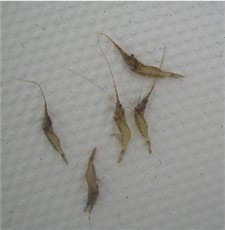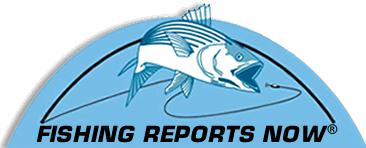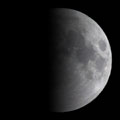page 1 of 2 |
||
| Fast, Furious, But Delicate Grass Shrimping for Barnegat Bay Weakfish By Mark Marquez II Photos from Capt. Steve Purul, Reel Fantasea Charters, Barnegat Light |
||
|
A description of Barnegat Bay That’s about right. But weakfish are also probably one of The yellowish color, speckled back and Fast, furious, delicate, but beautiful. Fast and furious because schools of A delicacy because the fishing is finesse. So light tackle is used. The rods are also light because of the weight Grass shrimp are the bait. The tiny crustaceans, an inch long and one of the main foods for weakfish, are the traditional bait for the fishery in Barnegat Bay. Steve gobs three of the shrimp on a shad dart or a small, plain hook and tosses them into the bay. Light tackle is used to control the small rigs. Jigging with soft plastic lures or bucktails is another way to fish for them. |
|
The old-fashioned way of obtaining The net forms a mouth around the frame, and the other end of the net is tied closed. The boat is used to pull the trawl across grass in the bay—they’re called grass shrimp, because they live in the grass. The trawl is lifted out of the water, and its contents are emptied by untying the back end of the net. |
||
 Grass shrimp. |
Nearly everything that lives in the bay will come up in the trawl, including juvenile fluke, sea horses, various crabs, tiny fish like sticklebacks, and of course the grass shrimp. The shrimp need to be separated from everything else, and the trawling license requires that everything but the shrimp be returned to the water. It’s somewhat time consuming, and it’s also messy, both while you’re on the water and when you get back to the dock and have to clean up the mud and debris that just covered your boat. |
|
 Grass shrimp are kept alive by storing them in a tray hanging at the top of a cooler with ice underneath. Holes are drilled in the stray to drain moisture that would kill the shrimp. |
He drills holes in the bottom of the tray to keep moisture from gathering. Steve anchors and starts chumming at a likely spot. The spots are usually tried and true areas where he’s had success at shrimping for weaks in the past. He’s got his own spots away from crowds, and the bay is full of such areas. But there are also well-known locations, like Meyer’s Hole, the 42 buoy, the BI marker, off Gulf Point and Tice’s Shoal. |
|
| Some of the spots, like Meyer’s Hole, are small stretches and can get mobbed in summer. Boat traffic or too many chum slicks will make shrimping ineffective. Shrimping usually works best in an open area with no strong current, as opposed to a place like a channel or a narrow area with a quick current. A fast current disperses the shrimp chum too quickly, and no weakfish will gather in a tight group in the slick. Although you’re looking for an open area, you still want to target traditional fish-holding structure, like a drop off, or a flat with a drop-off near grass, and so on. The area should also have little boat traffic that will scare the fish away. Is time of day important? Absolutely, Steve says. He says he likes to be cleaning fish by the time most boaters are leaving the dock. |
||




